Bitcoin short-term holders are capitulating: STH MVRV dropped below 1, forcing ~2.6k BTC of realized losses in two weeks, while long-term holders remain steady and seller exhaustion signals that selling pressure may be easing—pointing to a potential stabilization near $112,000 if demand returns.
-
STH MVRV below 1
-
STH Realized Loss rose to ~2.6k BTC in two weeks
-
Long-term holders (LTH) hold, Seller Exhaustion suggests selling may be slowing
Meta description: Bitcoin short-term holders capitulating as STH MVRV dips below 1 and realized losses surge to 2.6k BTC; see implications and key signals. Read analysis.
What is Bitcoin short-term holders capitulation?
Bitcoin short-term holders capitulation is when recent buyers sell at a loss, typically after STH MVRV drops below 1, indicating unrealized profits turned negative. This phase often coincides with spikes in realized losses and can precede market stabilization as long-term holders absorb supply.
How did STH MVRV and realized losses change recently?
Analyst Burak Kesmeci reported STH MVRV fell below 1 after 132 days in profit, the first comparable dip since February. The STH Unrealized Profit/Loss Ratio sits at 0.955, and STH Realized Loss climbed from 623 BTC to ~2.6k BTC in about two weeks.
These moves show short-term sellers are taking losses, increasing short-term selling pressure. Historically, large STH losses have often marked capitulation near market lows and preceded stronger recoveries when stronger hands accumulate.
Key Takeaways
- STH capitulation: STH MVRV below 1 signals short-term sellers are at a loss.
- Realized losses spike: STH Realized Loss rose to ~2.6k BTC, reflecting panic exits.
- LTH conviction: LTH sell-side risk fell, showing long-term holders prefer to hold.
- Seller exhaustion: Seller Exhaustion Constant dipped then began to rise, suggesting selling pressure could ease.
Why are long-term holders not selling?
Long-term holders (LTHs) show sustained conviction: Checkonchain data indicates LTH Sell-side Risk dropped sharply after a recent peak, now near 0.0017. With lower profit incentives and higher conviction, LTHs are less likely to add supply, helping absorb STH selling pressure.
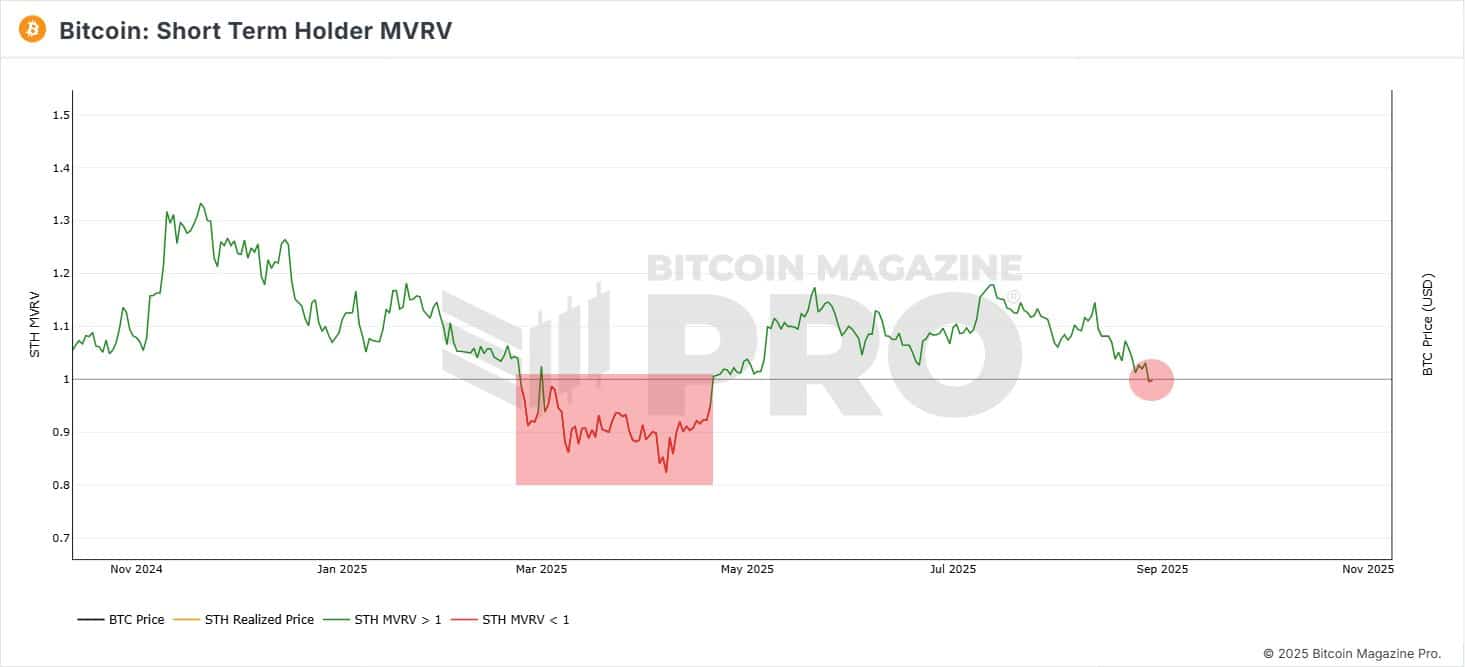
Source: Bitcoin Magazine Pro
When does seller exhaustion indicate a potential bottom?
Seller exhaustion appears when sustained selling weakens and the rate of sell-side activity slows. The Seller Exhaustion Constant fell through August and recently began rising again, a pattern that historically coincides with reduced selling pressure and creates room for price stabilization and recovery.
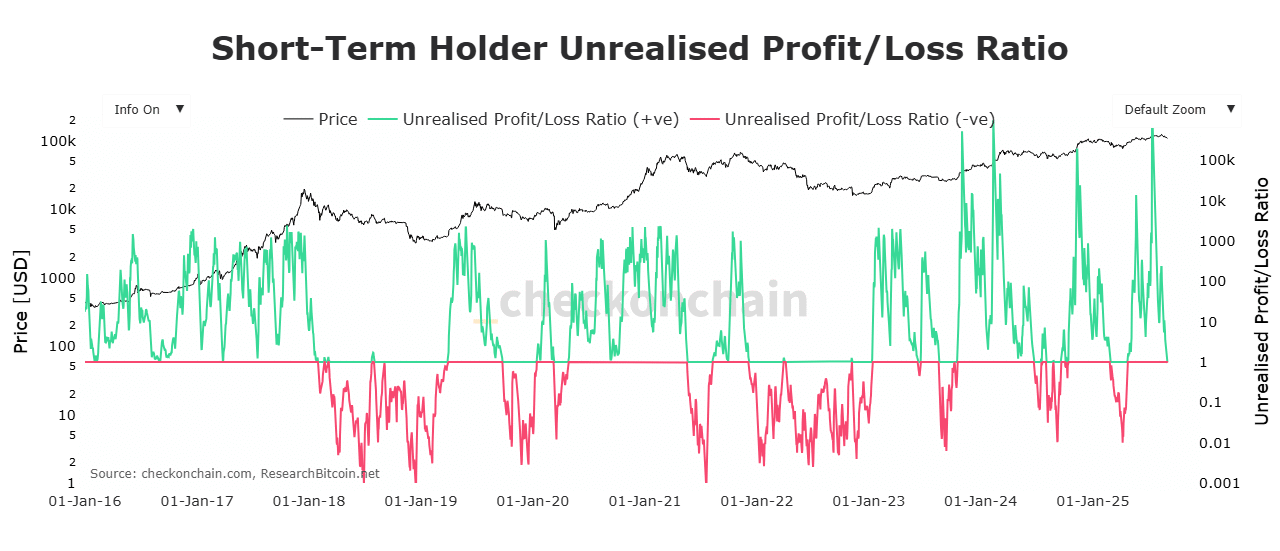
Source: Checkonchain
Realized losses rose sharply: STH Realized Loss moved from ~623 BTC to ~2.6k BTC, reflecting accelerated capitulation. This flush removes weak hands and can precede accumulation by longer-term holders.
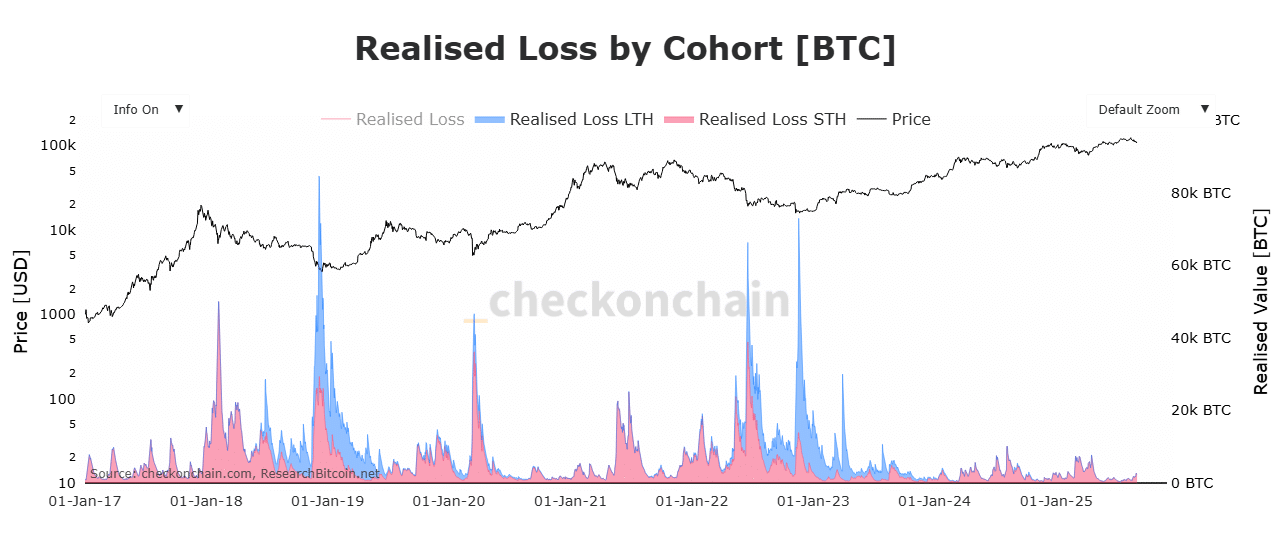
Source: Checkonchain
How could prices move next?
If seller exhaustion continues and demand returns, BTC could stabilize and test resistance near $112,000. If STH selling persists, downside toward $105,003 remains plausible. Market outcome will depend on demand re-emergence and LTH accumulation behavior.
How should traders interpret these metrics?
Use STH MVRV, STH Realized Loss, LTH Sell-side Risk, and Seller Exhaustion together. A combined signal of low STH MVRV, high realized losses, low LTH sell pressure, and rising exhaustion often maps to capitulation and potential accumulation windows.
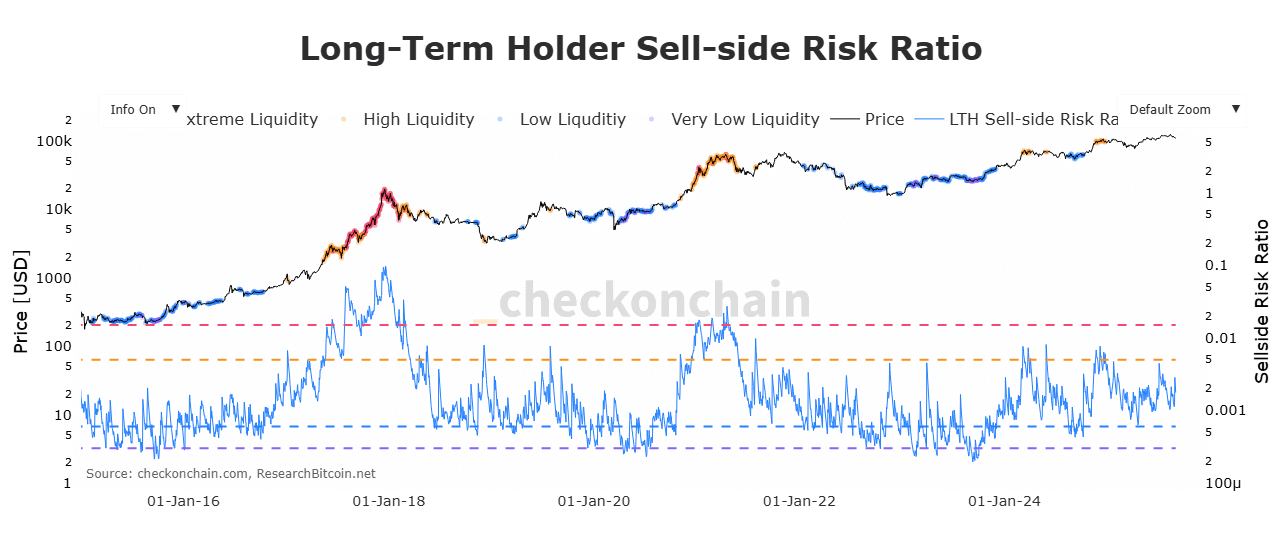
Source: Checkonchain
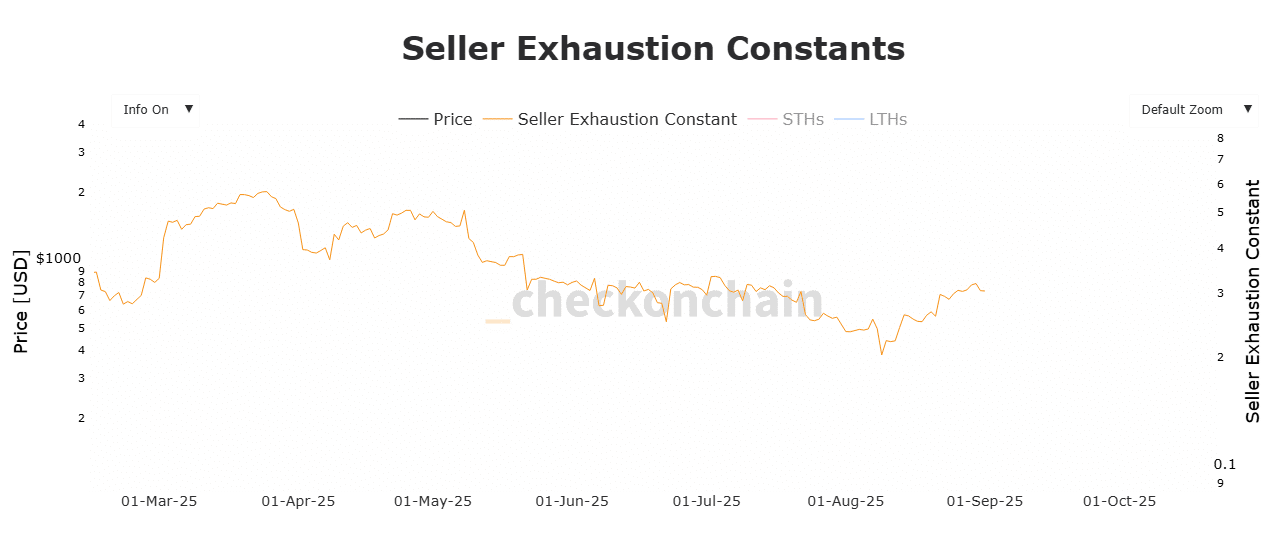
Source: Checkonchain
Frequently Asked Questions
What does STH MVRV below 1 mean for Bitcoin?
STH MVRV below 1 means short-term holders are, on average, holding positions that are underwater. This signals recent buyers are at a loss and often corresponds with increased selling pressure and realized losses.
Can STH realized losses indicate a market bottom?
Yes. Large STH realized losses often mark capitulation phases where weak hands exit, which can precede accumulation and a durable market bottom if demand returns and long-term holders absorb supply.
How can investors use seller exhaustion data?
Monitor seller exhaustion trends alongside on-chain metrics; rising exhaustion after heavy selling suggests supply is drying up, improving odds for stabilization and potential recovery opportunities.
Summary Table: Key Metrics
| Metric | Current Value | Implication |
|---|---|---|
| STH MVRV | 0.955 (below 1) | Short-term holders in net losses; capitulation |
| STH Realized Loss | ~2.6k BTC | High sell pressure from short-term holders |
| LTH Sell-side Risk | ~0.0017 | LTHs remain reluctant to sell |
| Seller Exhaustion Constant | Dipped then rose | Selling may be slowing; room for stabilization |
Conclusion
Bitcoin short-term holders are capitulating, producing notable realized losses and short-term sell pressure while long-term holders remain steady. Combined signals — STH MVRV, realized losses, LTH sell-side risk, and seller exhaustion — suggest the market may stabilize and target $112,000 if demand returns. Monitor these on-chain metrics for confirmation.
Published: 2025-09-02 | Updated: 2025-09-02
